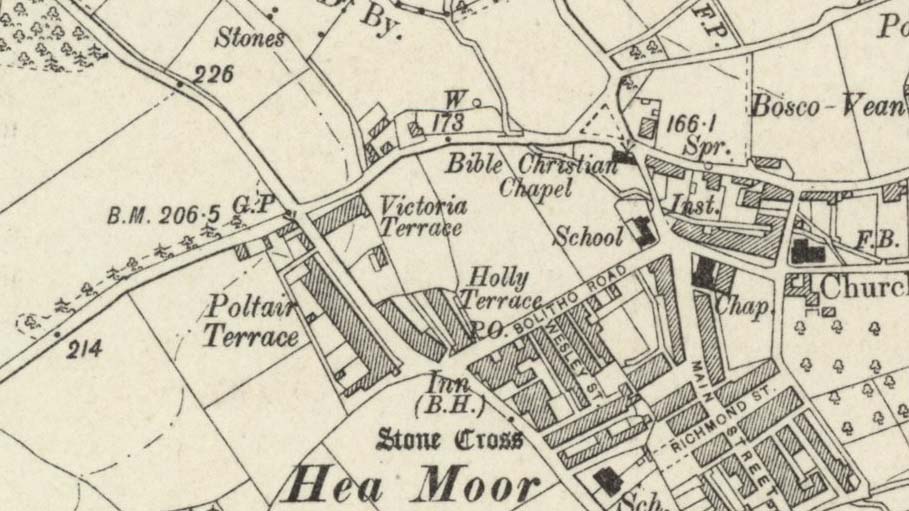
Heamoor (An Hay in Cornish) was originally 3 small groups of farm dwellings. The settlement was expanded by the Rose Price family of Trengwainton to build housing for their estate workers: hence there is Jamaica Place and Jamaica Terrace. In the early 1900s many terraces of houses were built for an expanding population. The village is situated on the main road leading from Penzance to what was originally the mother Church at Madron. Until the mid-20th century Heamoor had three centres of worship: Wesley Rock Wesleyan Chapel, the Bible Christian Chapel (Polmennor Road, Heamoor, Penzance TR18 3JF – opened in 1866) and the Church of England Church of St Thomas. Now only St Thomas’ Church and Wesley Rock chapel remain.
This information was originally compiled by Bill Dale, my father, who was born and lived in the village of Heamoor all his life. He was very interested in the history of the area and on his death, I inherited crates of files to spend my retirement building on. I have no idea who originally gave my father access or facts. I have left my father’s handwritten notes on the photos where appropriate. I have added into Dad’s original research with newspaper reports etc. This profile has been compiled by Val Thomas of St Ives Old Cornwall Society.
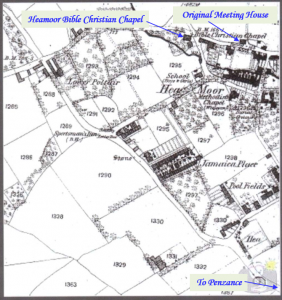 Hea Moor 1875
Hea Moor 1875
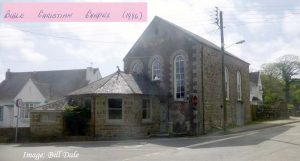
The Bible Christians
1803: William Bryant married Catherine Cowlin in the old church at St Piran. They were the last couple to be married there before the sands besieged the building.
1815 – October: William Bryant founded the Bible Christian branch. After this date he called himself O’Bryan.
Essentially, the Bible Christians represented a less ecclesiastical form of Wesleyan Methodism.
O’Bryan crossed the Atlantic thirteen times between 1831 and 1862.
The name Bible Christian originated from the fact that the members were in the habit of carrying their bibles under their arms.
The original Heamor chapel and members
For many years the members of the chapel held their meetings in a building on the land of Spring Park Field which is on what was the main road from Chyandour to Madron. The plot is by a stile to the public footpath to Polmennor Farm. This is shown on O.S. map No.1255.
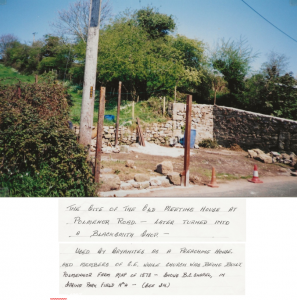 This area is immediately opposite the old Corin workshop which is now a working garage.
This area is immediately opposite the old Corin workshop which is now a working garage.
It is believed that the famous local preacher Billy Bray held a service on this site.
1864: As the number of members increased the trustees negotiated with Thomas Simon Bolitho of Poltair for a plot of land at Lower Poltair. The land was N.W. of the road leading from Gulval to Madron at the crossroads where this road is intersected by the Heamoor to Ding Dong mine road. This plot was leased for a period of 75 years at a ground rent of ten shillings per year. Work then started on the building of the new chapel which was opened in 1865. It was the only building in Heamoor to have a gallery.
When the original meeting house became vacant in 1865 it was taken over by members of the Church of England who met there until St Thomas’ Church was built.
It again became vacant and was used for several years as a blacksmith shop: the blacksmith being Mr Jenkin from Madron. During this period the building was used as a venue for local boxing matches in the evenings.
After being vacant for several years the building was taken over by E C Corin and Sons. They enlarged the building to take road vehicles and tools of trade as an overflow from their premises opposite.
1970: The building collapsed and the site was cleared leaving only one wall of the original building. The land was then used for parking vehicles.
Recently the site has been developed as secure parking for cars.
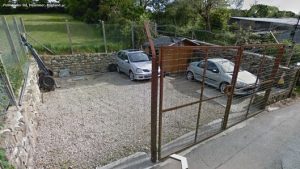 The site of the original chapel in 2020 (Image: Google maps)
The site of the original chapel in 2020 (Image: Google maps)
The New Chapel
1865: The new Bible Christian chapel was opened and the trustees were Messrs Michael Richards, John Tresise, Benjam Roberts, John Botheras and Richard Kessel. As there were no tithes or endowments to help with the building it was up to the efforts of members of the congregation to erect the building. Mr William Hocking of Manaccan made a loan of £230.00 of which only £180.00 was outstanding in 1879. During 1879 a further £79.00 was repaid. It was the only place of worship in Heamoor to have a balcony. Apparently, you entered via the annex on the left side in the photos and the balconies were around the other three sides so that the preacher faced Madron as he was talking to the congregation.

The 1864-1895 trust minutes are available at Kresen Kernow CRO/UK/495
1888: The “Cornishman” of December 20th said ‘The first of a series of Blue-Ribbon Meetings was held addressed by Mr R Dale, W A Bant and G Gray, and the Secretary, R Benjamin Roberts, (one of the oldest teetotallers in the district). The meeting was well-attended and was very hearty and enthusiastic throughout.
1892 – June 30th: A Harmonium player was wanted. Apply: J. Drew, 42, Tolver Road.
1906: The march to the picnic fields was photographed with the Sportmans Inn in the background. The photograph is taken from a garden in Poltair Terrace with ornate railings. These were removed in the 1940s as part of the war effort. The Picnic Fields were in the grounds behind Mount’s Bay School and had a lake with boats etc. The Heamoor Band is leading the parade and the banner reads HEA-MOOR BIBLE CHRISTIAN SUNDAY SCHOOL. When the Sunday School treats became a trip out on a coach it was an advantage to be a member of the Bible Christian Sunday school as, with the small number of pupils, the outing was to distant parts of the county … even one year to Looe!
1922: New trustees were appointed – Kresen Kernow ref: MRPZ/115.
1930: The children’s Sunday School was closed in the late 1930s.
1940: The chapel was recorded as having seating for 150 people.
Images of the chapel taken from the internet
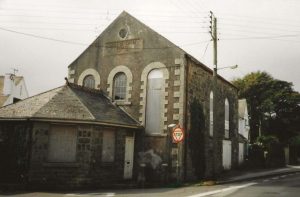
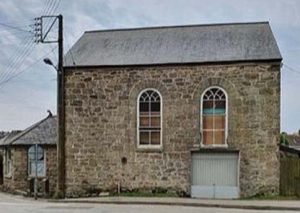
In its heyday the Bible Christian chapel had a large membership with a choir. Revival services held each day for one week enlivened the tedium of everyday life: converts sang of and shouted of a new-found joy. The numbers attending would even fill the seats in the gallery. The name of one evangelist that comes to mind is that of Mr Jolly of Mousehole who was very popular. The congregation, when properly moved, were wont to give encouragement to the preacher by such interjections as “Praise the Lord”, “God grant it”, “Alleluia”, “Blessed is his name” etc. Mr R Dale of Penzance spoke many times in support of the teetotal movement; chapel teas were another highlight and fundraiser. It gave some of us who were forced to attend a chance to have splits with jam and cream on a Monday. (Mr Richard Dale was a relative of my father’s).
Another means of raising funds was to rent out pews to regular members so that they had the same seat at every service.
It may be of interest to note that members of the Bible Christian chapels were known as Bryanites. This was because a Mr O’Bryan broke away from the Wesleyan faith and formed the Bible Christians. The miners of Cornwall and Devon took this faith and it prospered for almost 90 years. Mr O’Bryan moved to America at the age of 40 and died there at the age of 90.
The attitude of chapel members in the days gone by can be summed up by the remarks of one old lady: “Ais, we do all ‘ave to come to it, first an’ last, for christenings, marryings and buryins we must go to church. But for the praichin and anything for the next world give me the chapel.”
Funerals: – The love of feastings and processions became manifested in the all important ‘buryins’, which retained such a hold on chapel going Cornish people. The extraordinary predilection of the Cornish people for funerals was admirably expressed by the old lady who remarked: “Ais, I do dearly love a funeral, and I do go to all I can. And what I say is this ‘If you do go to other folks’ funerals, they will come to your’n!”.
Images taken by Bill Dale in 1996
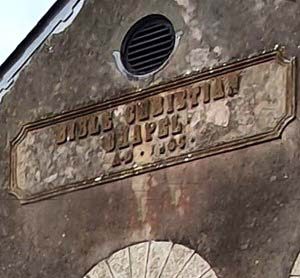

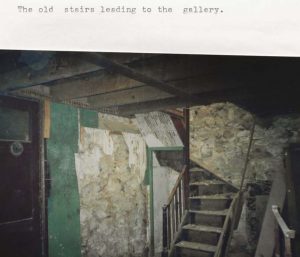
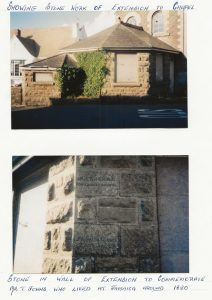
Notes: My brother and I both remember being told that the font in the Bible Christian Chapel was turned serpentine and came from the serpentine workshops at Wherrytown, which is between Newlyn and Penzance.
1960s. The last service was held in the Bible Christian Chapel on April 3rd and the congregation was amalgamated into Wesley Rock Chapel.
1967: The chapel was sold to Furlong and Green, builders and used as a workshop.
1996: The building was put up for sale with permission for conversion into a private dwelling. It was later developed into a dwelling and is now rated as two separate properties: The Annex and the Old Chapel.
Resources used:
Files of Mr Bill Dale, Heamoor
Wikimedia on Google
Picture Penzance
‘Find my Past’.
